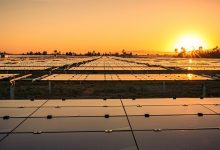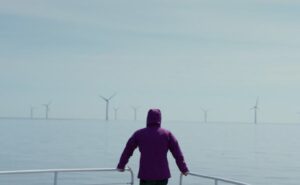An ARENA backed study into the hydrogen market has found that the integration of hydrogen production facilities with on-site solar is key to producing cost competitive renewable hydrogen.
The study found that the cheapest way to produce renewable hydrogen was to directly link a hydrogen producing electrolyser with an on-site solar generation project.
The Australian Renewable Energy Agency provided nearly $1 million in funding to ammonium producer Dyno Nobel to conduct the study, which is currently considering a proposal to build a large-scale on-site solar farm that is to be combined with a hydrogen electrolyser at its Moranbah facility in central Queensland.
With such an arrangement, hydrogen could be produced at around half the cost ($3.19 per kilogram of hydrogen) compared to a grid connected electrolyser ($6.08 per kilogram of hydrogen). The cost could be driven down even further with projects built at a larger scale.
Such an approach would open up the potential of producing renewable hydrogen at a cost below $2 per kilogram by 2025, with expected reductions in both the cost of renewable energy technologies and electrolyser technologies.
This would meet the Morrison government’s goal of ‘H2 under $2’ as stated by federal energy minister Angus Taylor, and according to the feasibility study, would create the potential for renewable hydrogen to compete as an alternative to natural gas.
The study, completed by consultants ANT Energy Solutions, found that while Australia has ample potential to become a world leader in renewable hydrogen production, one of the key barriers will be growing demand for Australian hydrogen in the short-term.
The report says that existing initiatives had Australia on track to produce just short of 3,000 tonnes of renewable hydrogen annually by 2025. However, production will greatly exceed demand for hydrogen from Australia’s energy and transport sectors.
More needs to be done to boost the demand for hydrogen, either by supporting the development of new uses within Australia, or to ensure Australia has the necessary export facilities to supply green hydrogen into an international market.
“Large scale renewable hydrogen developments before 2025 will exceed domestic market demand for high-value uses in transport and remote power by orders of magnitude,” the report says.
“With no existing hydrogen export supply chain, new developments will have difficulty in accessing export demand without further transformation.”
However, by investing in further in reducing the costs of hydrogen production in Australia could be the best strategy for solving the demand conundrum.
It would also allow Australian produced hydrogen to beat a Japanese government target of A$4 per kilogram, opening up a huge market opportunity that would underpin large scale investment in Australian projects and private sector investment in export infrastructure.
“State and Commonwealth governments now need to help facilitate the adoption of large-scale electrolysis in order to help drive down the capital cost of electrolyser stacks and local balance of plant,” the report added.
“This stimulus would enable Australia to take a leading role in the renewable hydrogen economy, by creating know how and/or production facilities which requires some subsidy for “first of kind” facilities, but in the long term would create significant employment and sustainable economic development.”
The anticipated level of Australian renewable hydrogen production is still well short of the anticipated potential demand forecast by ACIL Allen, which predicted Australia could capture 10 to 20 per cent of Japanese and South Korean demand for renewable hydrogen by 2030, with a mid-level demand forecast of 500,000 tonnes per year.
According to ACIL Allen, this would represent a $1.6 billion economic opportunity for Australia annually, as well as supporting the creation of almost 2,800 new jobs by 2030.
The study found that there is a further need to both significantly ramp up Australian production of renewable hydrogen, as well as ensuring Australia has the capacity to export the gas to international users.
As an alternative opportunity, directing renewable hydrogen for use in the production of ammonia, such as the Moranbah project being considered by Dyno Nobel, which is used as a fertiliser in the agricultural sector, and which consumes around two-thirds of Australia’s total hydrogen production.
“Based on more recent industry data and the continued reduction in cost of solar, there is potential for renewable hydrogen costs to be below $2.00 by 2025. At this level, renewable hydrogen would be cost competitive as a feedstock for ammonia production at some sites on the East coast of Australia,” the report says.
ARENA recently launched a $70 million funding round to boost the production of renewable hydrogen in Australia, opening up applications for projects that will deploy large-scale electrolyser facilities that will be powered by renewable sources.
RenewEconomy and the Smart Energy Council will be co-hosting a “virtual conference” on May 6, focusing on a renewables-led economic recovery, featuring industry leaders, analysts and advocates. More information and registration here.
RenewEconomy and its sister sites One Step Off The Grid and The Driven will continue to publish throughout the Covid-19 crisis, posting good news about technology and project development, and holding government, regulators and business to account. But as the conference market evaporates, and some advertisers pull in their budgets, readers can help by making a voluntary donation here to help ensure we can continue to offer the service free of charge and to as wide an audience as possible. Thankyou for your support.








